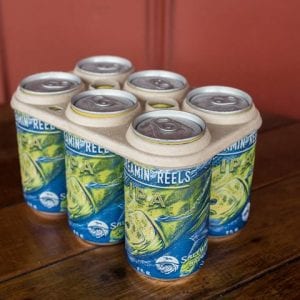Now that we have talked a lot about the extreme issue of pollution in our oceans, we want to discuss the positive ways that people are trying to help!
We have all heard of a few ideas that people have for cleaning the ocean along with some really cool technology. The purpose of this blog is to look at a few technological advances that might be vital in the future for cleaning our oceans. It is important that we know what is being done to help in order to figure out what else we can do. So here we go!
The Ocean Cleanup System 001
The Ocean Cleanup was founded in 2013 by an 18-year-old Dutch man named Boyan Slat. Boyan believes that as we move forward as a society, we need to clean up after ourselves as we go. The Ocean Cleanup is a non-profit organization that has the main goal of advancing technology in order to clean the oceans of pollution, specifically plastic pollution. The organization claims that it can clean half of the Great Pacific Garbage Patch in 5 years.
The main project is a 600-meter passive drifting system that utilizes the ocean’s currents to pick up trash as it goes. The technology has advanced throughout the years, but currently, the design is a “floater” that sits on top of the water and has a tapered 3-meter “skirt” attached below. The floater prevents plastic from flowing over and the skirt makes sure plastic debris does not escape underneath. The ocean’s current will carry the system and catch plastic as it goes.
On their website, The Ocean Cleanup claims that the floating system is designed to capture tiny to large sizes of debris including ghost nets. They claim that if they were able to put the system to work full-scale in oceans around the world, along with a reduction of littering, they could clean 90% of ocean pollution by 2040. Wow!
Visit their website at www.theoceancleanup.com/technology/ for more information. They have a ton of cool graphics and easy to read information about their organization and their efforts to end ocean pollution.
E6PR
E6PR, or Eco Six-Pack Ring, is an eco-friendly six-pack ring. We have all seen the images of animals misshapen or choking due to these rings that are made of plastic, but the 3 groups who founded E6PR decided that enough was enough and made a product that could be a solution to the problem. As I mentioned, this company was founded in 2017 by 3 different groups, We Believers, Entelequia, and private investors in the beverage packing industry. They got together, and with help, created a product that could replace plastic rings.
E6PR is made of byproduct waste and other compostable materials. If the product is disposed of properly and makes it to a compostable facility, it has the ability to degrade in a matter of days. If it finds its way to a land or water system, it is able to degrade in a matter of weeks, depending on where it ends up. The beauty of this product is that it does not cause harm to wildlife if eaten.
In 2016, Salt Water Brewery announced that all of their six-packs of a specific beer would be packaged with this compostable holder. They claim the six-pack rings are made of byproduct from brewing beer, such as barley and wheat.
Check out this article by National Geographic on this issue (www.nationalgeographic.com/environment/2018/09/news-plastic-six-pack-rings-alternatives-history/) as well as the website for E6PR for more information (www.e6pr.com/about-e6pr).
Seabin Project
A Seabin is a product that was created by Andrew Turton and Pete Ceglinski who were passionate surfers who quit their jobs to create a seabin that could collect trash, oil, fuel, and detergents from the ocean. While creating a product was one of the goals for the company, the ultimate goal that drives their passion is to “have pollution free oceans for our future generations”.
The Seabin is a “ floating debris interception device” that can be placed in areas with calm water and where services are available. The bin sucks in water from the surface which passes through a bag inside the Seabin. The Seabin has a submersible water pump that is capable of displacing 25.000 Lph (liters per hour), which is plugged into a 110/220 V outlet. The water is sucked into the bin then displaced back to the marina while the debris stays in the bin. The Seabin is able to collect 3.3 pounds (1.5 kgs) of floating debris a day including microplastics. It is also able to collect around ½ tons of debris in a year.
As you might assume, the Seabin must be cleaned and maintained in order for the product to be used to its full potential. The Seabin can hold up to 44 pounds (or 20 kgs) and should be checked twice a day and cleaned at least once a month. This device must be placed in an area that is a problem area for pollution such as marinas or floating docks. This makes it easier for the currents and wind to push debris towards the Seabin.
For more information about the Seabin Project, visit their website at www.seabinproject.com/ . They have tons of information, videos, and a great blog!
What To Do Now?
Now that we know some of the technological advancements that are being made in order to help put a stop to ocean pollution, don’t you want to help! We may not all be able to come up with cool new inventions but keep recycling, cleaning beaches and helping where you can to stop ocean pollution. We made the problem so let’s work together to solve it!





